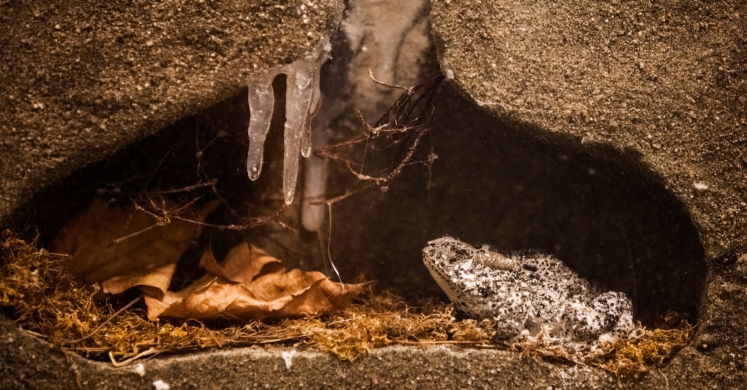Blog

#bioPGH Blog: Dormancy
 A resource of Biophilia: Pittsburgh, #bioPGH is a weekly blog and social media series that aims to encourage both children and adults to reconnect with nature and enjoy what each of our distinctive seasons has to offer. From the best times to plant seasonal flora and enjoy their peak blooms, to astronomical events and creatures to keep an eye and ear out for, Phipps will keep you in the know with what’s going on in our environment!
A resource of Biophilia: Pittsburgh, #bioPGH is a weekly blog and social media series that aims to encourage both children and adults to reconnect with nature and enjoy what each of our distinctive seasons has to offer. From the best times to plant seasonal flora and enjoy their peak blooms, to astronomical events and creatures to keep an eye and ear out for, Phipps will keep you in the know with what’s going on in our environment!
Winter tends to be a fairly quiet season, with the exception of the presence of a few resident critters that don’t head south or into slumber when the temperatures begin to dip. But what becomes of our local species of fauna that don’t migrate south for the winter or stay awake for it? There has to be more wildlife in Pittsburgh during the winter months than white-tailed deer, raccoons, rodents, rabbits and several species of our feathered friends. And in fact there are, we just can’t always see them. Rather than migrate south for the winter or stay awake for it, several species will simply hit the snooze button and ride out the cold conditions in a state of slumber referred to as dormancy. When an animal enters a dormant state it is ultimately reducing its metabolic activity. In other words, it is conserving much needed energy in order to survive an environmental stressor, such as an extreme temperature change or lack of food. For example, when the temperature begins to steadily drop, cold-blooded creatures such as amphibians and reptiles become scarce as they begin to make their way towards the bottom of ponds and as they burrow deep into the soil where they’ll rest until the weather becomes warm again. While there are several different types of dormancy, the dormant state that an animal enters is often unique to the organism and the environmental stressors it is experiencing. And, there is no specific period of time that an animal will remain in a dormant state, which is why you may have heard of some sightings of critters typically found in the summer, such as amphibians and reptiles, just a few weeks ago when the temperatures rose well above the average for this time of year!
Connecting to the Outdoors Tip: Although you may not be able to immediately spot their location, there are several animals waiting for winter to end, safe and snug throughout the city, in its parks and possibly even right in your own backyards! As you enjoy the fresh blanketing of snow, keep an eye out for animal tracks. Consider photographing them or outlining them with food-dye to get a better look and try to identify what non-dormant animal made them. If you’d like to investigate animal tracks, but from the comfort of a warm and cozy home, consider creating some of your own animal tracks in playdough or with paint and have little ones try to identify who made them. Consider creating some tracks from animals that are active in Pittsburgh during the winter months (like white-tailed deer, cardinals and rabbits) as well as dormant (like bullfrogs, box turtles and bears) and see if little ones can identify the dormant animal’s prints.
Continue the Conversation: Share your nature discoveries with our community by posting to Twitter and Instagram with hashtag #bioPGH, and R.S.V.P. to attend our next Biophilia: Pittsburgh meeting.
Additional Resources:
Difference Between Hibernation and Other Types of Dormancy - Buzzle
How Do Frogs Survive Winter? - Scientific American
Pennsylvania Wild Bird and Mammal Lists - Pennsylvania Game Commission
Animal Tracks Identification: Critter Pictures - The Old Farmer’s Almanac
Animals in Winter - The Natural Home School
Getting Stated Identifying Animal Tracks - Nature Tracking

